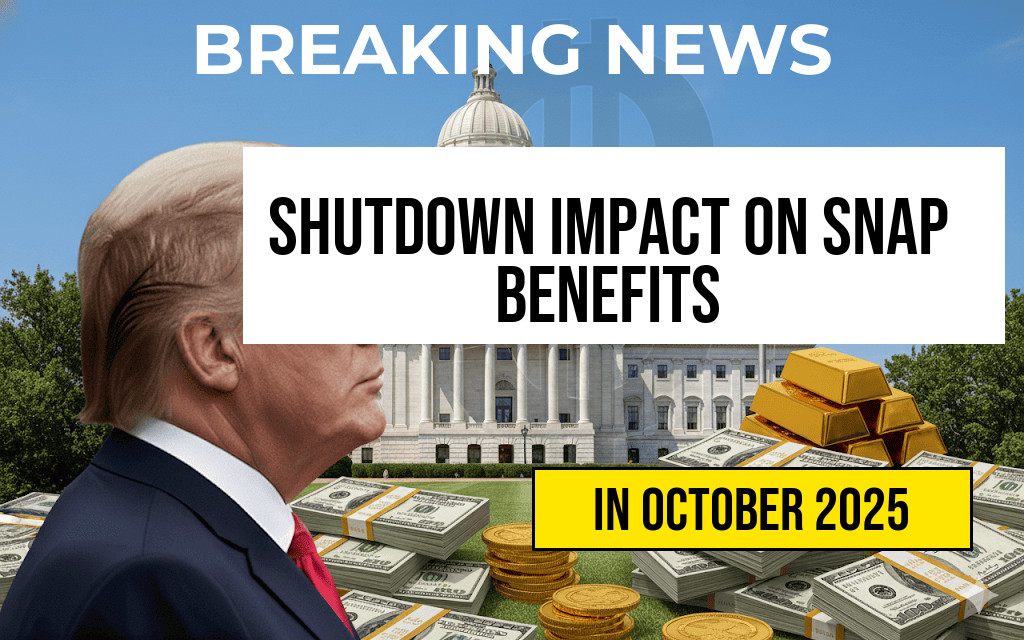The looming threat of a government shutdown has sent ripples through numerous federal programs, with SNAP benefits (Supplemental Nutrition Assistance Program), commonly known as food stamps, among the most vulnerable. If lawmakers fail to reach a funding agreement, millions of Americans who rely on these benefits could face disruptions. Historically, temporary lapses in federal funding have led to delays and uncertainties for recipients, but a prolonged shutdown could cause significant financial hardship for vulnerable populations. As negotiations continue on Capitol Hill, understanding how a government shutdown impacts SNAP and food assistance programs is crucial for affected households, advocacy groups, and policymakers alike.
Understanding SNAP and Its Funding Structure
The SNAP program is administered by the U.S. Department of Agriculture (USDA) and provides monthly benefits to low-income individuals and families to purchase food. These benefits are distributed via electronic benefit transfer (EBT) cards, which recipients can use at authorized retailers nationwide. The program’s funding is primarily allocated through annual appropriations approved by Congress, with states managing the distribution and administration of benefits.
Typically, SNAP benefits are disbursed around the same time each month, with states preparing for the scheduled payments. However, when the federal government faces a shutdown, the continuity of these benefits can be jeopardized, especially if appropriations are not extended or new funding is not enacted promptly.
Impact of a Shutdown on SNAP Benefits
Potential Delays and Disruptions
- Benefit issuance delays: During previous shutdowns, some states have experienced delays in processing and distributing SNAP benefits. These delays can leave vulnerable households without access to crucial food resources during critical periods.
- Funding uncertainty: SNAP benefits are funded through appropriations that require annual renewal. If federal funding lapses, the USDA may have limited authority to continue issuing benefits, potentially leading to gaps in support.
- State-level responses: States often use reserve funds or temporary measures to mitigate disruptions, but these are limited and may not suffice in extended shutdown scenarios.
Legal and Policy Considerations
Federal law typically mandates that benefits already allocated to recipients remain available, even during a government shutdown. However, the USDA has sometimes issued guidance suggesting that new applications or re-certifications could be delayed or paused, affecting future eligibility and benefit levels. This could result in households losing benefits if they are unable to meet re-certification deadlines or if new applicants cannot complete their applications.
Broader Food Assistance Programs and Community Impact
Beyond SNAP, other food assistance initiatives, such as school meal programs and food banks, may also face funding uncertainties during a shutdown. Schools relying on federal reimbursements for free and reduced-price meals could experience delays, impacting children’s access to nutritious food. Community organizations that distribute emergency food supplies often depend on federal grants, which may be delayed or reduced in a funding lapse.
These disruptions can exacerbate food insecurity, especially in communities already facing economic challenges. According to the Feeding America network, food insecurity rose sharply during previous shutdowns, underscoring the importance of continuous federal support.
Government Responses and Legislative Options
Contingency Plans and Emergency Measures
In past shutdowns, agencies have implemented contingency plans to ensure that critical benefits are issued without interruption, often using reserve funds or emergency authorities. However, these measures are not always sufficient to cover extended shutdown periods.
Legislative Solutions
Lawmakers have the ability to pass short-term funding bills or continuing resolutions to avert a shutdown and maintain funding for essential programs like SNAP. Some have proposed bipartisan agreements to ensure benefit continuity during funding gaps, recognizing the potential hardship faced by millions of Americans.
Recent discussions suggest that the Biden administration and Congress are aware of the urgency, with some officials emphasizing the importance of protecting food assistance programs from political gridlock. Details on upcoming legislative actions can be followed via official government portals such as Congress.gov.
Implications for Recipients and Recommendations
| Effect | Description |
|---|---|
| Delayed Benefits | Possible postponements in benefit distribution, leading to temporary food insecurity. |
| Benefit Reductions | Potential delays in re-certification may reduce or suspend benefits for certain recipients. |
| Increased Food Insecurity | Households may face difficulty accessing sufficient food, especially in vulnerable communities. |
| Limited Access to New Applicants | New applicants or those needing re-qualification may encounter delays or denials. |
For recipients, staying informed through local agencies and community organizations is crucial. Preparing by purchasing non-perishable foods and exploring local food bank resources can mitigate immediate hardships. Advocacy groups continue to urge policymakers to prioritize funding for essential food programs to avoid the devastating effects of a shutdown.
Frequently Asked Questions
What is the potential impact of a government shutdown on SNAP benefits?
A government shutdown can temporarily disrupt SNAP benefits, potentially delaying or reducing assistance for eligible individuals and families depending on federal funding continuity.
Will my food stamp assistance continue if the government shuts down?
During a government shutdown, some food stamp assistance benefits may still be provided through state funds, but there could be delays or reductions if federal allocations are temporarily halted.
How long could SNAP benefits be affected during a shutdown?
The duration of SNAP disruptions depends on the length of the government shutdown. Short-term shutdowns may have minimal impact, while prolonged closures could significantly affect benefit distribution.
Are there any steps I should take if I rely on food assistance during a shutdown?
It is advisable to stay informed through official government updates and local agencies. Consider stocking up on essentials ahead of time and exploring community resources for additional support.
Who can I contact for more information about SNAP benefits during a government shutdown?
For detailed information, contact your state SNAP office or visit the USDA website. Local food assistance agencies can also provide guidance on your specific situation.

Leave a Reply